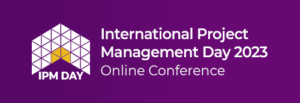By Dr. Harold Kerzner
October 25, 2023
What is meant by project management complexity or project complexity? Why is it important to know now? How will knowing this make my life (as a project professional) easier? Organizational projects are by nature far-reaching and complex. Understanding how corporate projects start and take shape, and recognizing different types of complexity can help you determine the appropriate methodology for the project.
The Early Years of Project Management
The birth of modern project management practices was heavily oriented around projects that were initiated based upon well-defined requirements that were known at the onset of the project. In most cases, the technology needed to support the requirements was also known and available. The creation of project management forms, guidelines, templates, and checklists accompanied by the waterfall project management methodology placed significantly more emphasis on the tools for project management than on the project management leadership styles or interpersonal skills needed.

Complexity was discussed occasionally in the literature, but primarily for megaprojects that were usually more than $1 billion (US$). Even though some of the megaprojects met the project’s constraints and initial requirements, most failures were blamed upon the inability to manage complexity.
Large projects are generally treated as complex projects because of the number of components that must interact. This includes factors related to component budgeting, legal issues, political issues, and contractor coordination efforts. It is very difficult to predict with any degree of certainty how all these components would interface with each other and interact over time.
The need for a better understanding of complexity began to appear in strategic projects that were smaller than megaprojects. These smaller strategic projects, such as those involving creativity, R&D, and innovation, were usually assigned to functional managers who were allowed to use any tools they desired and any leadership style they were comfortable with. As the turn of the century approached, companies recognized the need for a more structured approach to managing strategic projects and a better understanding of complexity. Some of the issues facing executives that appeared with strategic projects included:
- Unable to make informed decisions in a timely manner due to a lack of good metrics.
- Unable to tell if each project was creating business value until significant funds have been spent.
- Unable to verify alignment of projects to strategic business objectives.
- Unable to tell if the company was working on the right portfolio of strategic projects.
The root cause of most of these issues was that strategic projects were considered significantly more complex than most traditional or operational projects. Failures resulting from traditional projects were blamed on cost overruns and major schedule slippages. Failures on strategic projects arose from a poor understanding of complexity and assigning resources that could not effectively manage or deal with complexity. In many companies, up to 60 percent of the strategic projects failed to meet goals and objectives.
The Fuzzy Front End
The fuzzy front end (FFE) of a project is where executives, stakeholders, and governance personnel would meet to select and prioritize projects for execution. Rarely was complexity considered other than from a cursory perspective. Projects were selected and prioritized based upon need, then assigned to a project manager for implementation. Project managers often rushed into project execution without fully understanding the risks and complexities.
Until recently, project managers did not participate in the FFE. The decision-makers often had a very limited understanding at best of project complexity and focused upon the need to meet strategic goals and objectives rather than the risks and issues with project execution. Project selection and prioritization must be based upon an understanding of the complexity of the project and the ability of the team to manage complexity. This is one of the critical reasons why today, project managers and selected team members are invited to participate in the FFE before funding is committed for a strategic project.

Degrees of Project Complexity
Most authors of complexity literature argue that the first step in managing a complex project is to identify the degree or magnitude of the complexity by classifying the type of complex project.[1] Dave Snowden identified four types of projects, each containing some degree of complexity, based upon the Cynefin framework:[2]

- Simple: clear, obvious, or known projects, systems, or contexts. The characteristics and cause-and-effect relationships are known. The projects can be solved with standard operating procedures and with most of the tools used with traditional projects.
- Complicated: characterized by known risks or events, but unsure about the impact or consequences. A complicated system is the sum of its parts. In principle, it can be deconstructed into smaller simpler components, but not all of the relationships between components are known. While difficult, complicated problems are theoretically solvable with additional resources, with specialized expertise, with analytical, reductionist, simplification, decomposition techniques, with scenario planning, and following good practices.[3],[4]
- Complex: characterized by many unknowns, and complex relationships between components. Patterns could be uncovered, but they are not obvious.
- Really complex: These projects are very complex and chaotic. There are many unknowns. No patterns are discernible. Causes and effects relationships are unclear. A significant number of trial-and-error solutions may be necessary. Conflicting objectives may occur when considering legal, ethical, and regulatory requirements.
Types of Project Complexity
The second step is the identification of the types of complexity. In 1996, Baccarini published an article that made project management personnel aware of the need for a better understanding of project complexity. Complex projects include a great deal of risk and uncertainty because of several factors including project size, duration, number of stakeholders, new technologies, complex processes, and multiple technical disciplines needing coordination. The severity of these characteristics, and the necessity for their interaction, makes it difficult to manage the projects and accurately predict the outcomes.

Complexity can change the way we make decisions and can force us to rethink the expected goals and objectives. Complexity can affect the organizational structure we select for managing projects and the way that we staff projects. Complexity influences the way we perform project planning, scheduling, monitoring, and control practices. Therefore, the type of complexity often determines the skill set needed for the person best qualified to serve as the project manager.
Even the simplest type of project that begins with what is perceived to be complete information can become complex if, during the execution of the project, there are changes in stakeholders, objectives change, and new technologies appear. This causes the interrelatedness of the parts of the project to change, thus creating a complex working environment.
There are many ways in which authors tend to define the types of project complexity. There are characteristics that are common to several types of complexity. Some of the more common ways to define types of complexity include:
- Structural complexity: This occurs when the project has many parts, and the parts can change over time. The interdependencies between the parts may be unknown and accompanied by a lack of adequate information or constantly changing information that then leads to complexity. If each of the project’s parts is under a separate contract, then changes in the interdependencies can require new contracts with different requirements. Dependency changes can create a great deal of tension among the participants.
- Dynamic complexity. This occurs when working on a project unlike anything you have done in the past and there exists a great deal of uncertainty or ambiguity between the components of the project, the environment, and the boundary conditions imposed. Many components may have a dependance on other components likely to change over time. Dynamic complexity has some of the same characteristics as structural complexity. Ambiguity can be the result of having too much or too little information, thus leading to confusion and conflicts. Therefore, unlike many traditional projects, complex projects are continuously evolving and must adapt to new or modified risks that organizational stakeholders are willing to accept. On complex projects, early recognition and understanding of the potential risks is a necessity for effective project staffing and planning.
Managing complexity and the accompanying risks may not be able to be accomplished using the same tools, techniques, templates, checklists, and metrics that are used on traditional projects. New project control systems may need to be introduced as the complex project evolves. Senior management must visibly support these new control systems that will remove some employees from their comfort zones and possibly lead to toxic behavior. Some people have a difficult time adapting to complex projects that may focus on a process-oriented strategy subject to continuous changes.
- Technical complexity. This occurs when technical breakthroughs may be needed to achieve the objectives because the technology needed is unknown or doesn’t exist at the onset of the project or when the planned or known technology at the onset of the project changes during project execution. It can also include the technical skills required by the team members, partners, and contractors.
- Environmental complexity. This is also called temporal complexity and results from changes in the enterprise’s environment as the project progresses. For example, legislative changes can create unexpected additional constraints now, and in the future, thus destabilizing the project. Integration of globalized components that may be impacted by local politics, cultures, and religions will increase the risk and uncertainty of the project during execution.
- Organizational complexity. This occurs when there exist many hierarchical and functional units that must interact to support the project. The greater the number of functional units that must work together, the greater the chance that each unit may have a different approach for managing projects. The system becomes more critical if some of the units are dispersed geographically and in different time zones. The interdependencies and interfacing requirements with other projects, legacy systems, functional unit requirements and contractor relationships can create havoc.
- Directional complexity. This occurs when stakeholders and project governance personnel change during the execution of the project and mandate new outcomes because they may not have completely understood the direction of the project. This can change organizational funding priorities and organizational goals, thus increasing the levels of complexity. This can occur when a project is politically sensitive. Sometimes changes may be needed because original project planning was based upon vague requirements or hidden agendas.
Conclusion
The damage that can be done by not understanding or managing complexity correctly is quite large and expected to occur more often now that we are using project management more frequently on strategic projects. Coordinating the efforts of many specialists is critical because of the unpredictability and instability of complex projects.
More emphasis needs to be placed upon risk management practices when analyzing project complexity. The risks associated with project complexity need to be considered when selecting and approving projects, not necessarily after project execution begins. Fortunately, we have techniques today such as Agile, Scrum, and hybrid methodologies which allow for better approaches to managing project complexities during project execution.

Sources
[1] Portion of this section has been adapted from Wikipedia, Types of complexity.
[2] Snowden, David J., and Boone, Mary E. (2007). “A Leader’s Framework for Decision Making”. Harvard Business Review. 85 (11): 68–76.
[3] Maurer, Maik (2017). Complexity Management in Engineering Design – a Primer. Berlin, Heidelberg: Springer.
[4] Kurtz, C.F.; Snowden, David J. (2003). “The new dynamics of strategy: Sense-making in a complex and complicated world”. IBM Systems Journal. 42 (3): 462–483.
[5] Baccarini, D. (1996). “The concept of project complexity, a review”. International Journal of Project Management. 14 (4): 201–204.
Dr. Harold D. Kerzner is Senior Executive Director at the International Institute for Learning, Inc., a global learning solutions company that conducts training for leading corporations throughout the world.
He is a globally recognized expert on project, program, and portfolio management, total quality management, and strategic planning. Dr. Kerzner is the author of bestselling books and texts, including the acclaimed Project Management: A Systems Approach to Planning, Scheduling, and Controlling, Thirteenth Edition. His latest book, Project Management Next Generation: The Pillars for Organizational Excellence, co-authored with Dr. Al Zeitoun and Dr. Ricardo Viana Vargas, delivers an expert discussion on project management implementation of all kinds.




